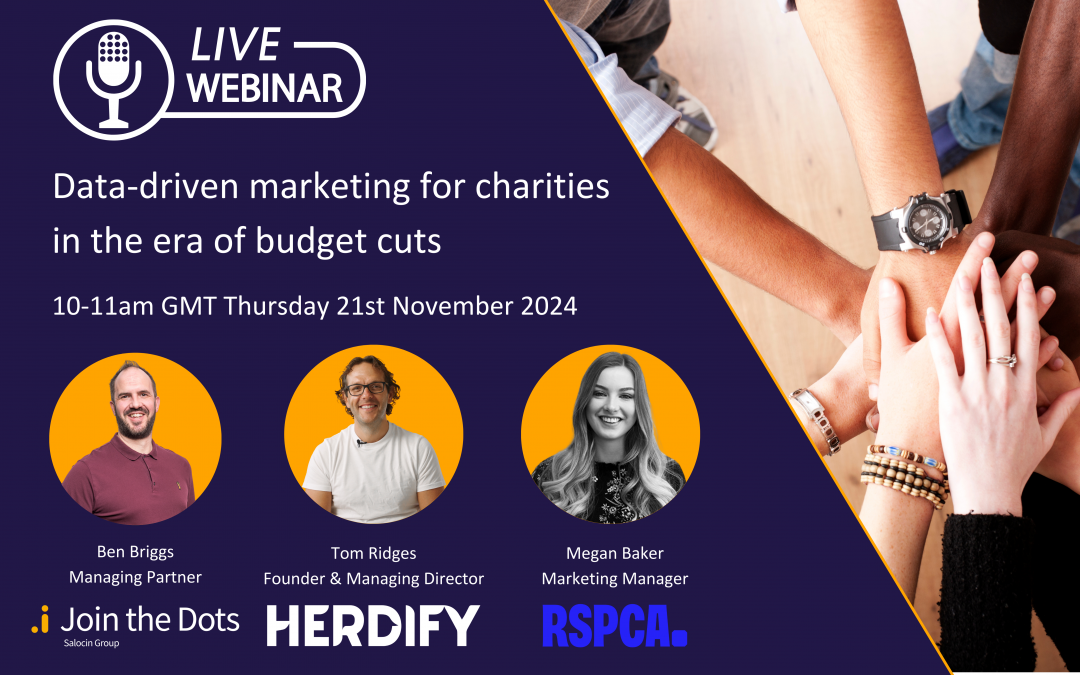Post-GDPR, how we use the data our customers give us is more important than ever.
We knew it would be very difficult to justify having a legitimate interest to contact an individual from traditional, cold, third-party party data alone. Therefore, consent is the permission that companies should try to collect, when possible, to implement in their outbound marketing activity.
And now that we’re navigating a post-GDPR world, we need to be savvier and more meticulous about collecting outbound consent via lead generation – which is where co-reg comes into play.
What is co-reg lead generation?
Just so that we are clear on what aspect of lead generation we’re referring to with co-reg, embr.com offers a perfect summary:
“Co-registration (or co-reg) lead generation is a little-known method of generating highly qualified and targeted leads on a pay per lead basis. Co-reg leads are obtained by presenting your company’s offer to consumers who are completing an online survey, usually through incentivising the traffic.”
For example, if people are signing up for a relevant newsletter, they may be prompted to sign up for other offers, therefore increasing the subscriber base of multiple businesses rather than just one.
How to run a co-reg lead generation campaign
Attracting the audience
The type of audience whose data is being purchased is largely compiled of adults aged 25-50 of a B, C1, or C2 affluence, with some sites having a female bias.
As mentioned in the definition above, the methods for driving the traffic to sites – which results in the data collection – is nearly always incentivised, either to win a prize or trial a free product.
While some companies turn their noses up at generating and purchasing this type of data, these people are naturally searching around for deals.
So, if you target them with a good product and a good offer, it can be quite a powerful and effective trigger to contact them on.
Branded questions
When running a co-registration campaign, it’s important to consider the capabilities of the third-party sites you will be featured on and how your question looks on both mobile and desktop devices.
Different sites have different journeys and customer experiences, and you need to understand how each one functions so that you can utilise this as best as possible for the brands and products you are advertising.
They can ask basic to more detailed demographic questions, or even a mini lifestyle survey. Some of the sites then use this more detailed information to inform what questions they go on to see in the survey path and in what order, while others use simpler rules based on the CPL you are paying and engagement levels.
While you can send mail if you have a legitimate interest (although the interpretation of “legitimate” is being stretched as it currently is!), postal mailings can be expensive, and so are rarely featured.
SMS, telephone and email are the more common, as they largely require consent for prospects and are relatively inexpensive to activate, so they are the channels that are predominantly generated by the co-registration campaigns.
Regardless of the question format and requested channel opt-in, the GDPR is clear in that “An indication of consent must be unambiguous and involve a clear affirmative action (an opt-in).”
When reviewing potential sites and questions, it is imperative that these standards are consistently met by all third parties involved. It’s also worth noting that these suppliers are sometimes relatively small sales agencies, and so service levels, capabilities, and understandings of compliance/due diligence can vary greatly.
Proposal and process
Next up, a proposal will need to be created for each supplier with expected net volumes and costs.
As highlighted above, it is very important to meet the standard of consent, and so screenshots must be gathered, along with links to the sites, so that these can be reviewed by all relevant parties.
If you need a gauge on the volume of traffic that is driven to the supplier’s sites, similarweb is a good tool to look this up on. From this, you should be able to estimate the number of leads a supplier should genuinely be able to deliver for you and which suppliers are going to be able to drive the more substantial volume.
Upon ordering the data, the order confirmation to activate the campaign must have clear instructions that detail the level of due diligence required from the selected third party, as well as the data you are selecting to purchase.
With the levels of professionality and service levels surrounding personal data needing to be very high under GDPR, the instruction to third parties could be in the form of a mini-service level agreement, detailing exactly what you expect from the supplier and how you expect them to conduct their work.
Data processing
The logistics with regards to the sending and receiving of data is also a key aspect of the campaign and can be the difference between success and failure. Suppliers need to know who to send the data to – either a third-party platform, the intermediary agency, the client directly, or a call centre.
Real-time APIs are available, but a word of caution: the data should be deduped, suppressed, validated, and have obscenities removed before it is useable. Whatever decision you make, you must factor this in.
However, it is proven that the sooner you process this data, the better it performs. There is certainly a decision you need to make as a business between efficiency, practicality, and cost. A platform can greatly help with this and there are a few available on the market.
Operational compliance work
While there is a lot to consider before the campaign starts, there’s also a lot of operational BAU work to undertake on a consistent basis.
There must be clear, auditable examples of how the consent was captured. This must be formally documented and continually updated, meaning that the third-party sites must all be checked on a semi-regular basis.
Optimising the campaign
Once you know which sources of data are performing best for your campaign, you can begin to optimise to reflect this. You can cap data from the worst performing sources and take as much data you can from the better performing sources.
You can also increase the CPL on the best-performing sites, allowing suppliers to get you more volume because your question will be pushed further up the survey path and therefore seen by more people, giving you a higher opt-in volume.
The survey path rules are always going to be based on what makes the third-party supplier the most money and the engagement of the question will also be a big factor in this.
Another way (and our preference) is to work with the suppliers to make sure your questions and campaign are as engaging as possible. This means reducing the number of questions asked, making the wording as clear but concise as possible, using familiar language and making any images of high quality.
The way the images are presented, and overall aesthetics of the question, will go a long way to catching their eye and opting into your request.
It is very important to note, that while you want people to opt-in as much as possible to sources that are performing well, the consent must still meet the standards outlined by the ICO.
For more advice on how to make your CTA’s as engaging as possible, check out Marc Bowers’ blog.
Making it perform
Once you know the channel works for you and you are optimising it from the supplier end as much as possible, it’s important to make sure that you are using the data to its full potential.
Make the contact strategies for both telephone and email, dependent on what your permission allows you to use, as effective as possible. And look at optimising your messaging or scripts to drive the most conversions.!
If your messaging within the question itself is clear, theoretically people should want to hear from you and should be interested in a product or service from you, so don’t lose them now!
Contacting individuals with the right message, following on from the original basis of consent they opted in to receive communications from you, means that you have a much higher chance of converting them from prospect to customer. Communicating with them as soon as possible is also key.
Who is activating this campaign?
Are you (as the client) running the campaign directly with a supplier? And are they a service provider or a sales agency, with the service capabilities as a bolt on?
Unless what you’re currently doing is working well, it could be worth using a pure service provider agency to carry out the campaign on your behalf.
Due to the amount of work involved, the market knowledge required, and high level of due diligence necessary under GDPR, it’s important to get every single detail correct to ensure you’re operating in line with the new policy while maximising the potential results.
Conclusion
This channel can perform really well, in terms of generating a good volume of compliant data and achieving a good CPA.
However, you need to be advertising a product and offer that is relevant for these sites and their audiences if you’re going to get the most out of it as a channel. The product must be accessible and useable by the sites audiences: utilities, telecoms and retail tend to be the sectors that thrive the most in this space.
There also must be a constant monitoring on the due diligence to make sure that all the hard work is not let down by not treating individual’s privacy rights appropriately!
There must also be a consistent optimisation at the supplier level, making sure you are getting the most data you can from the best performing sources, meaning that this campaign is going to be a continual moving beast!
Once you have received the data, it is crucial to make sure that your acquisition contact strategy is effective and if you have the correct permissions to do so, entering them into a nursery CRM programme could also achieve fantastic results.
If you are embarking on your first co-reg lead gen campaign or are maybe changing it slightly after reading this blog, then good luck! It is a channel that can work incredibly well, but you need to work hard to make that happen!
To chat about how we can help with your next creative digital media campaign, contact our team today.











